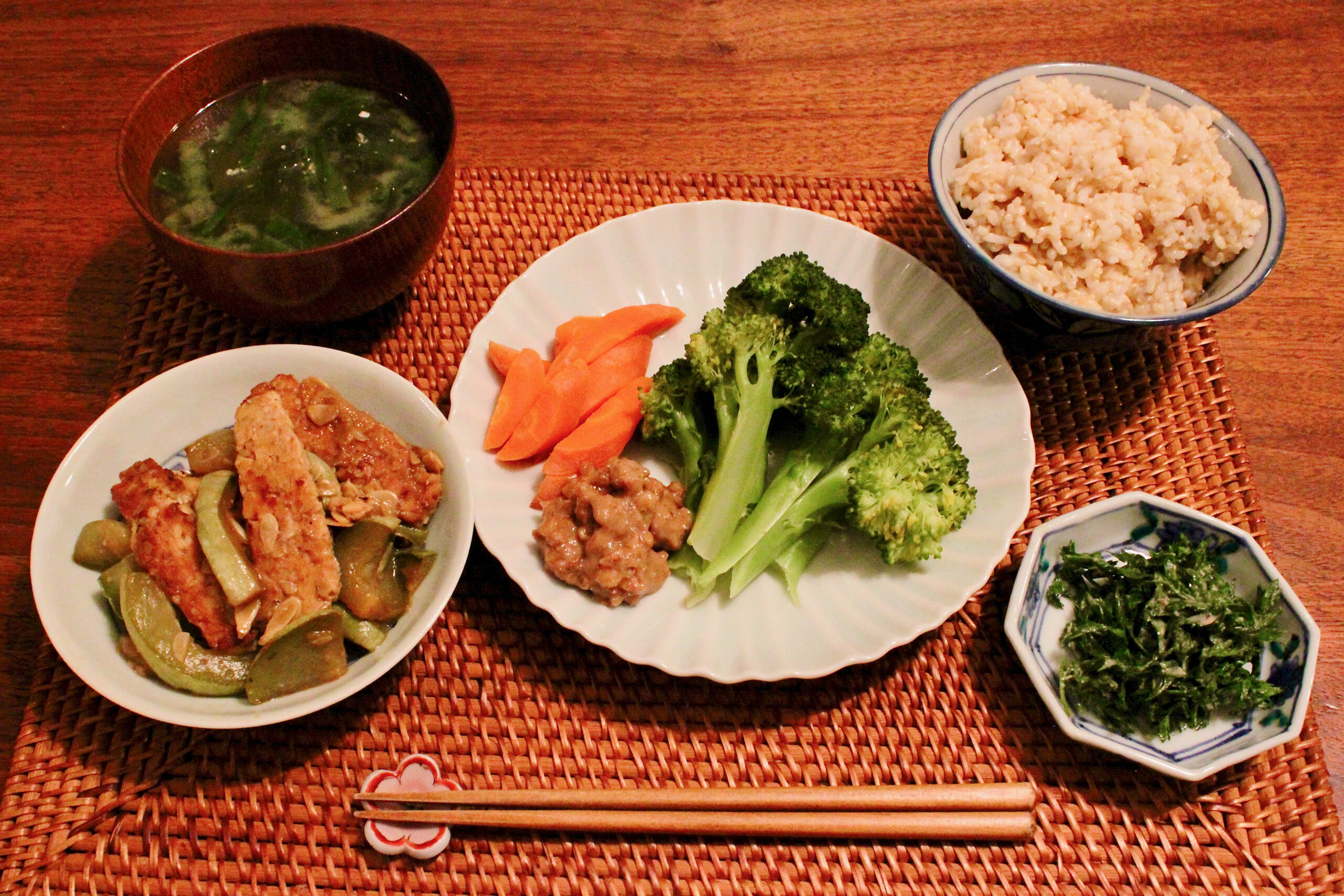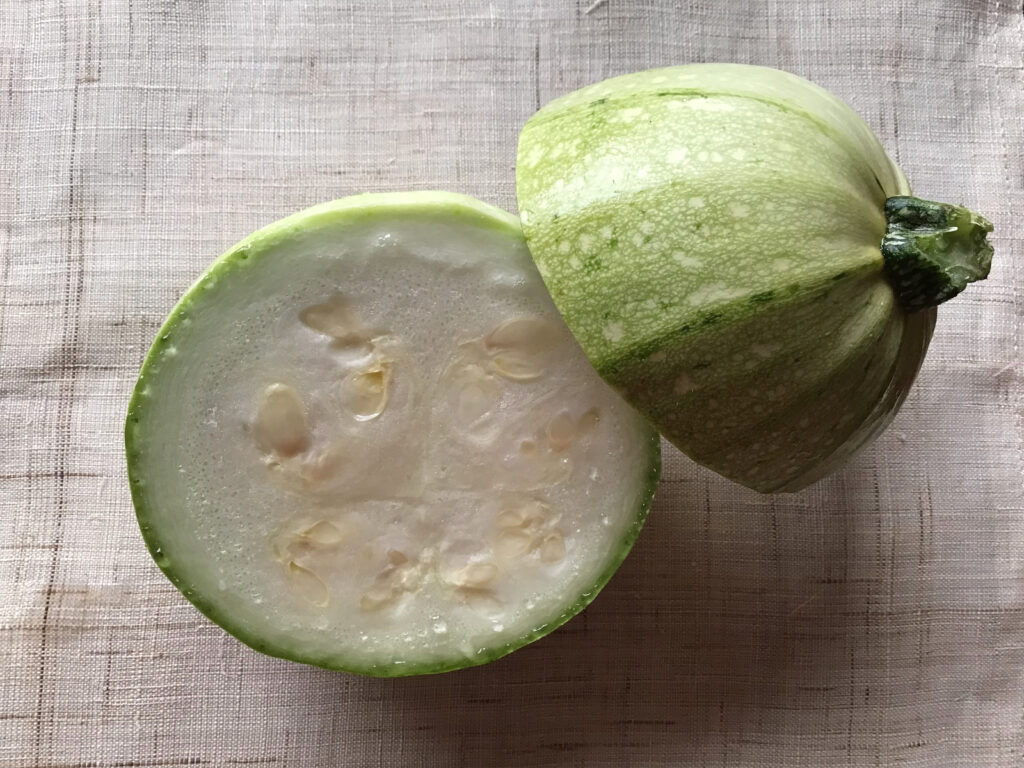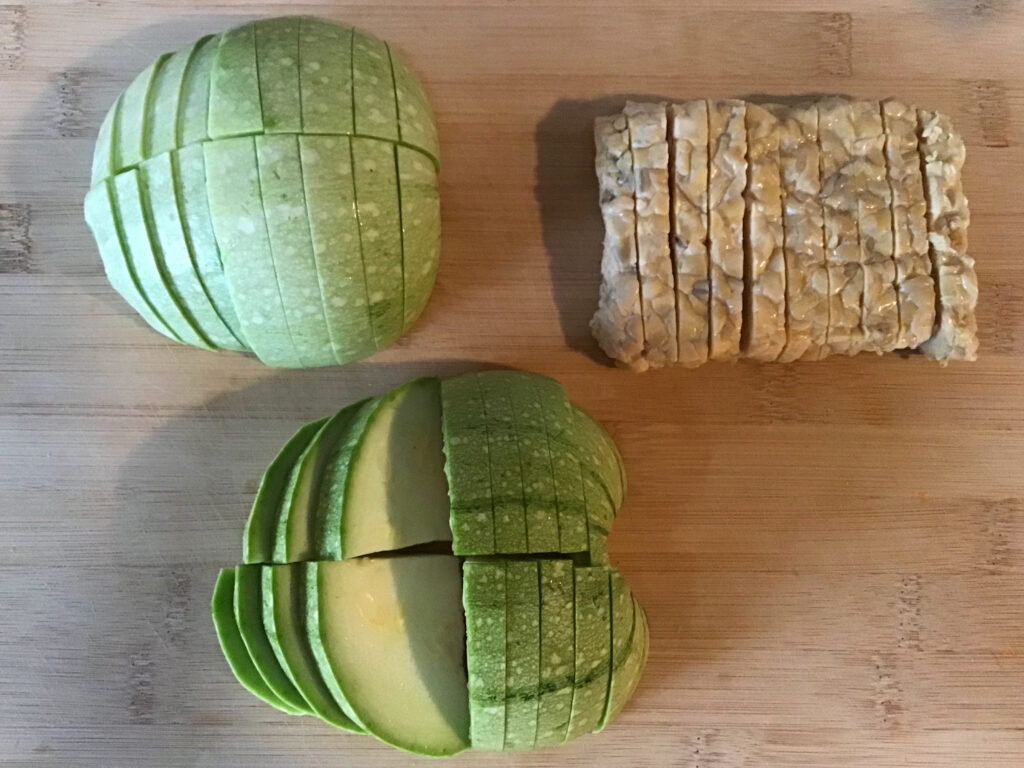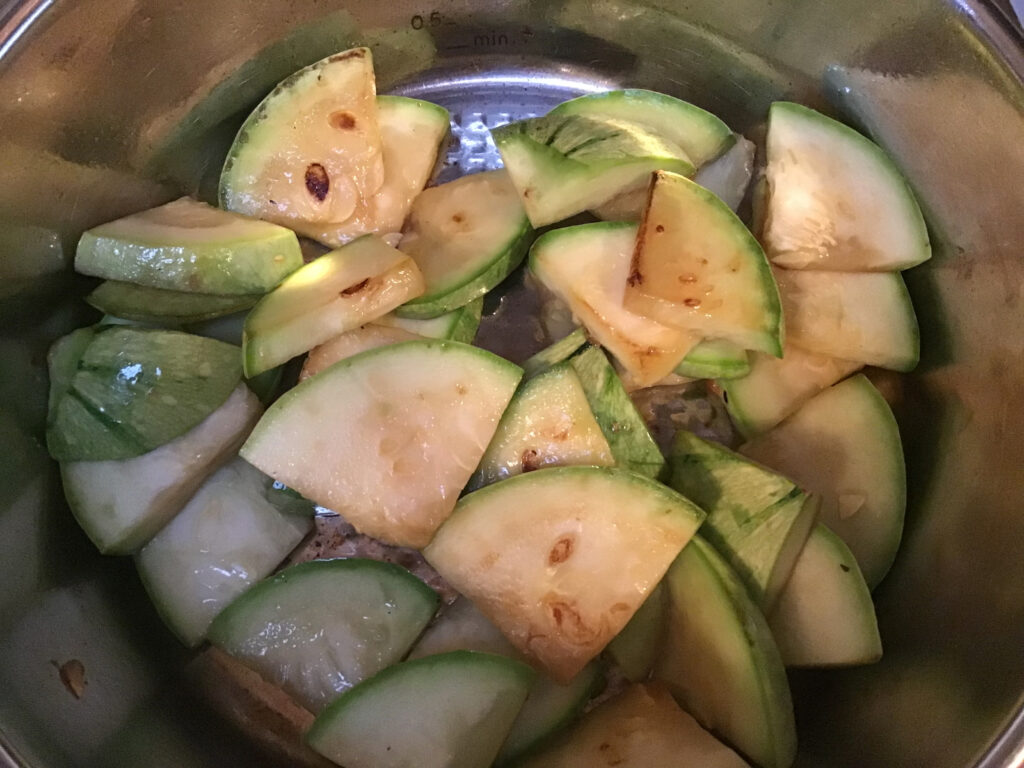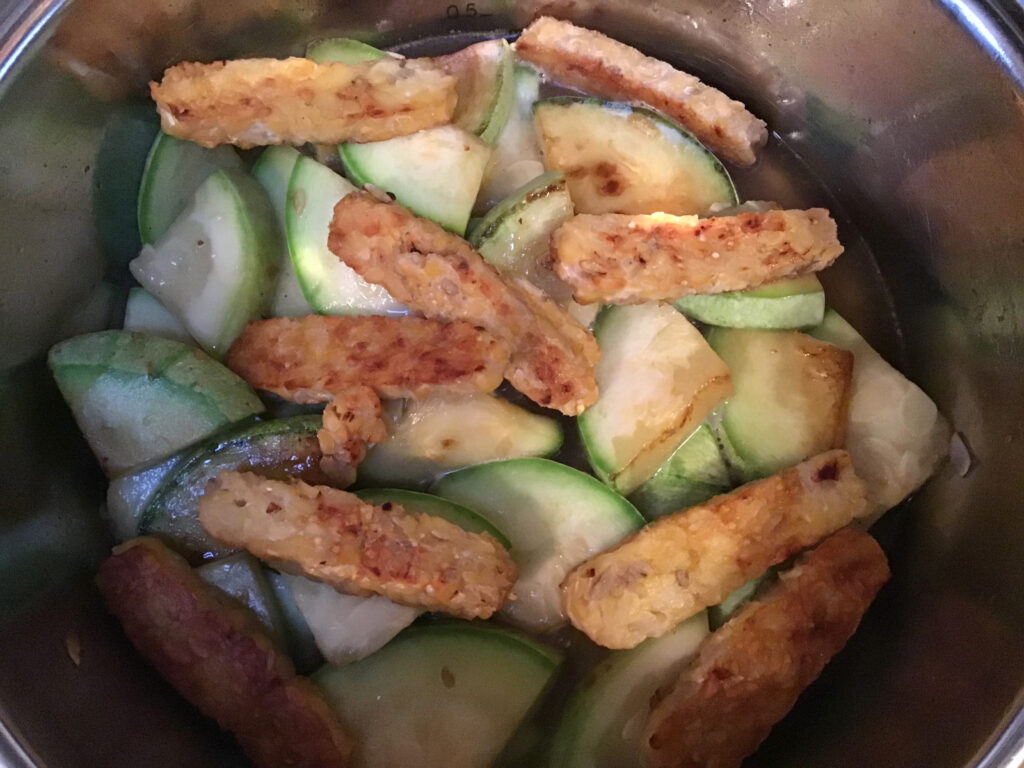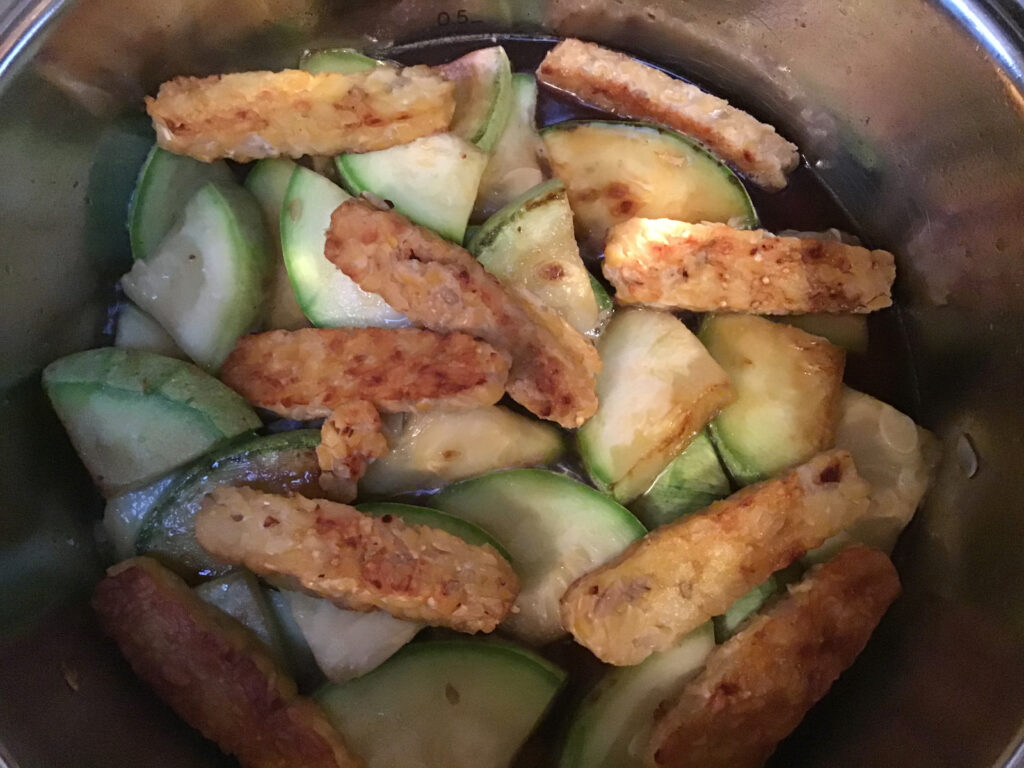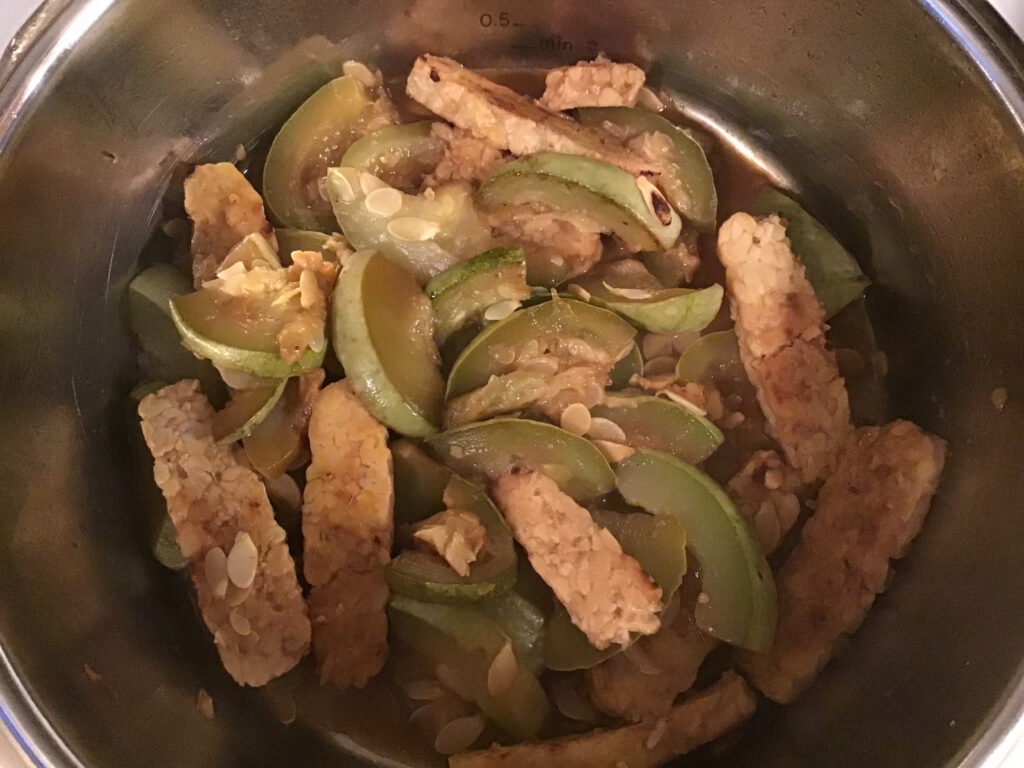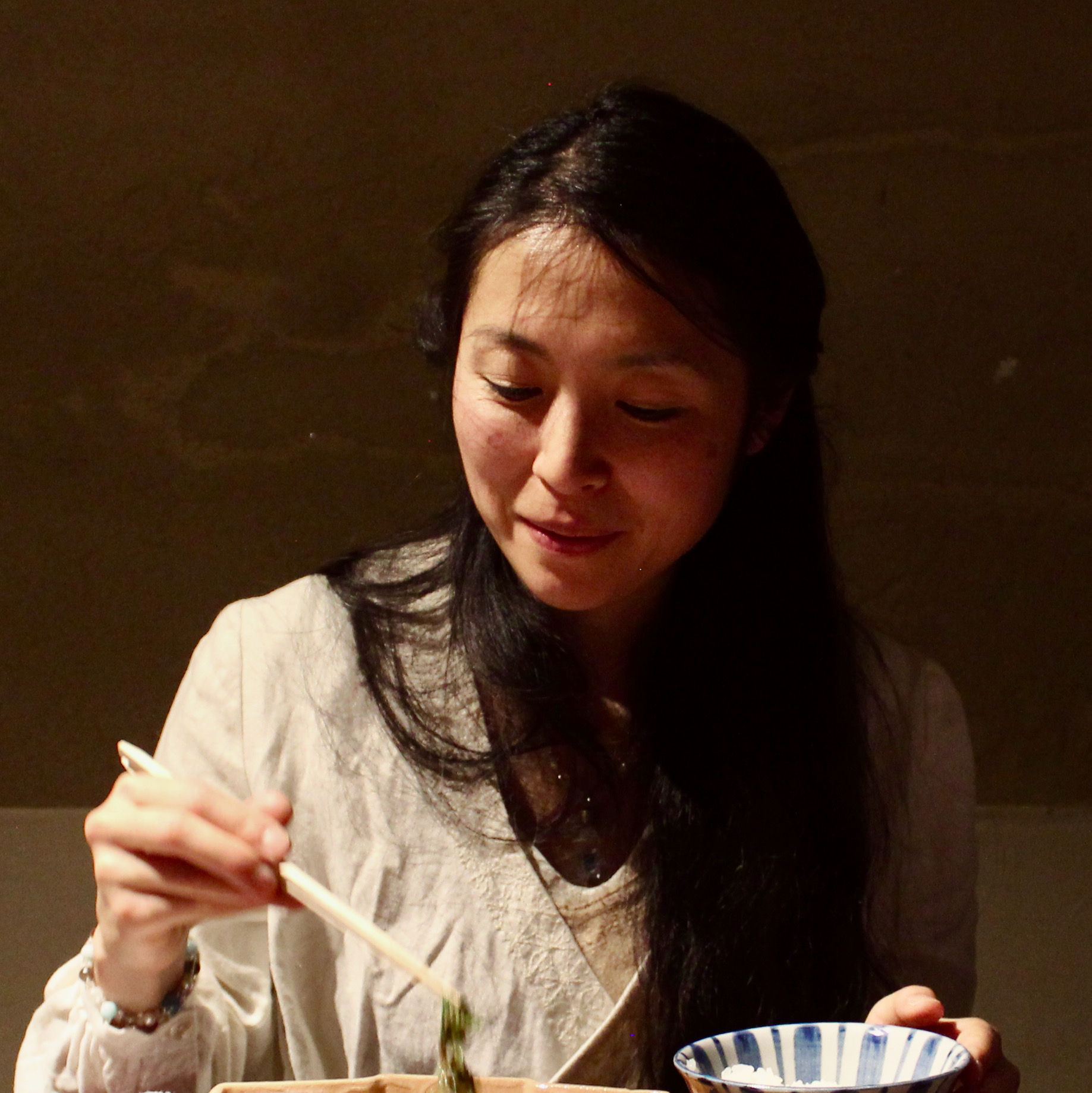October is here and the autumn season has arrived. Living in California, the seasonal shift feels much subtler than in other places I have lived, as the temperature as well as color of the tree leaves remain quite similar. And yet, I have been feeling something in the air. There is no doubt that I am sensing the changes in the length of days getting shorter. But there is something more to it. The atmosphere becomes more poetic, my outward radiating energy begins to have a milder edge, and the body starts to long for something warm and nurturing. It is always fascinating how our body and inner alchemies are in deed in sync with the cycles of nature.
This seasonal change is perceivable also at the farmers market. There are still many summer crops available, but the varieties are decreasing gradually. And slowly, the autumn crops are starting to appear. It is one of the precious times of year when we can enjoy the overlapping of two different seasons at the market. And today’s dinner was one of these examples where we can sense this seasonal transition.
Today’s Menu
- Brown rice (Click here to learn how to cook delicious brown rice.)
- Miso soup with wakame and spring onion (Basic recipe for miso soup here)
- Carrot greens salad with tahini sauce (recipe here)
- Steamed broccoli and carrots in walnut-miso sauce
- Squash and tempeh cooked in soy-ginger sauce
Steamed vegetables with walnut-miso sauce
One of the signs of the seasonal change I sensed at the farmers market was the broccoli’s appearance. It’s the sign for me that the colder season is arriving. With this shift, our body takes pleasure in eating warmer food rather than more raw vegetables. Steaming is a perfect way to still keep the freshness of the vegetables (if we decide to steam lightly) and yet receiving the warmth as well as the softness of the vegetables. The preference of the sauce also changed from spring-summer season to autumn-winter season. In the later season, the darker and richer sauce feels so nourishing. Therefore, for today’s sauce, I made walnut-miso sauce. Walnuts are one of the rare nuts that warms our body. It is also under the category of black food, which supports the health of our kidney, reproductive organs, as well as natural immunity. Miso is filled with probiotics, as its fermentation process takes half a year to a year. And it is good for warming our organs, grounding, and detoxing. The combination between the walnuts and miso is not only wonderful in flavor but also perfect for warming our body.
The ingredients of the walnut-miso sauce:
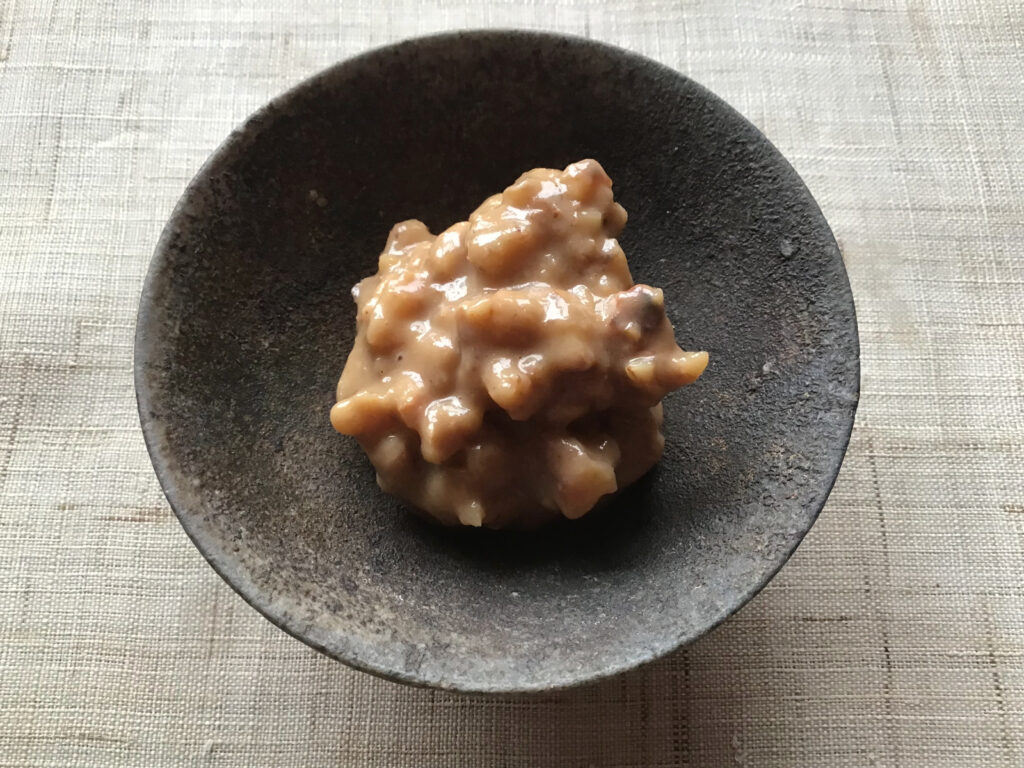
- 1 tsp tahini
- 2 tsp white miso
- 1 tsp soy sauce
- 1 tsp mirin
- 8 roasted walnuts
Using summer squash in an autumn way
What a beautiful, round summer squash. They are still in the market. Although it is a summer crop here, as I saw this vegetable it reminded me of Tougan—a Japanese winter melon. As the season is changing, my association with the vegetables was also naturally transformed. Winter melon is, in fact, much larger, longer, and has larger seeds. And yet, as it is also in the gourd family, there are some similarities between these two vegetables for sure. In Japan, we cook winter melon with broth for warm dishes.
I was inspired to cook this round summer squash in the broth, rather than sautéing, for instance, which I have done a lot during the summer season. This dish I made is a beautiful combination between the fresh, watery squash vegetable, and the gently substantial tempeh in kombu broth flavored with soy sauce and fresh ginger. The key to make this dish rich in flavor is to first sauté both of the ingredients with oil, then cook with the broth, soy sauce, and add the ginger at the end. Adding fresh graded ginger (or fresh pressed ginger juice) to the cooked dish is miraculous. It warms our body, but also it lifts us up with its aroma and brings such a fragrant and refreshing feeling to the dish.
Squash and tempeh cooked in soy-ginger sauce

Ingredients
- 1 medium size onion
- 1 zucchini
- 100g tempeh
- 1 cup kombu broth
- 1 tbsp soy sauce
- 2 tsp sake (optional)
- 2 tsp grated ginger (or 1/2 tsp fresh ginger juice)
- toasted sesame oil
Directions
- Step 1 Sliced the squash and tempeh.
- Step 2 First fry the tempeh in a shallow pot with some oil to make both sides golden and crisp.
- Step 3 Take out the tempeh from the pot and reserve it on a plate for later use.
- Step 4 Add a little more oil to the pot and start to sauté the squash at high heat.
- Step 5 Once the squash receives good heat and becomes a little tender, pour in the kombu broth and sake (optional), cover with the lid, and cook for about 10 minutes at medium low heat.
- Step 6 Open the lid and add the reserved tempeh. Pour in the soy sauce, allow it to blend well with all of the broth by tilting the pot from side to side, then put the lid back on to cook for 5 more minutes.
- Step 7 Open the lid and let the liquid evaporate while gently stirring and repositioning the squash and tempeh so that they all absorb the broth well.
- Step 8 In the last minute, then put the grated ginger (or fresh pressed ginger juice) in, and mix well with all other ingredients.
